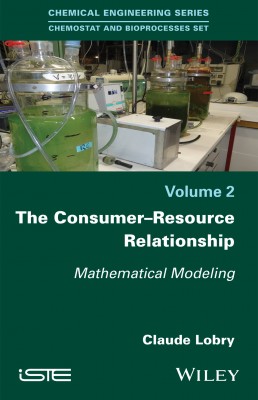
After an historical description of the most famous deterministic mathematical models of the consumer–resource (also called predator–prey) relationship, such as the Lotka–Volterra, Gause and Rosenzweig–MacArthur models, this book introduces more recent models such as the Arditi–Ginzburg model. Competition for one resource is considered in detail and predictions of resource-dependent models (competitive exclusion) are compared to those of ratio-dependent models (possibility of coexistence).
Deterministic models are appropriate when the number of individuals in each population is very large, as is the case in microbial ecology and chemostat cultures. Nonetheless, this book discusses how even in this case, the discrete nature of populations may cause unexpected extinctions. All of the mathematical developments in this book are illustrated with extensive simulations.
This book is intended for students or researchers who have studied at engineering school or undergraduate level, with a background in mathematics and an interest in ecological theory.
1. History of the Predator–Prey Model.
2. The Consumer–Resource Model.
3. Competition.
4. “Demographic Noise” and “Atto-fox” Problem.
5. Mathematical Supplement: “Canards” of Planar Systems.
Appendix 1. Differential Equations and Vector Fields.
Appendix 2. Planar Vector Field.
Appendix 3. Discontinuous Planar Vector Fields.
Claude Lobry is a former Professor at both the University of Bordeaux and the University of Nice in France. His present research interests are the mathematical theory of “nonstandard” differential systems and mathematical modeling of population dynamics.